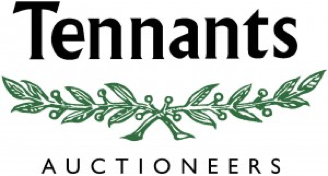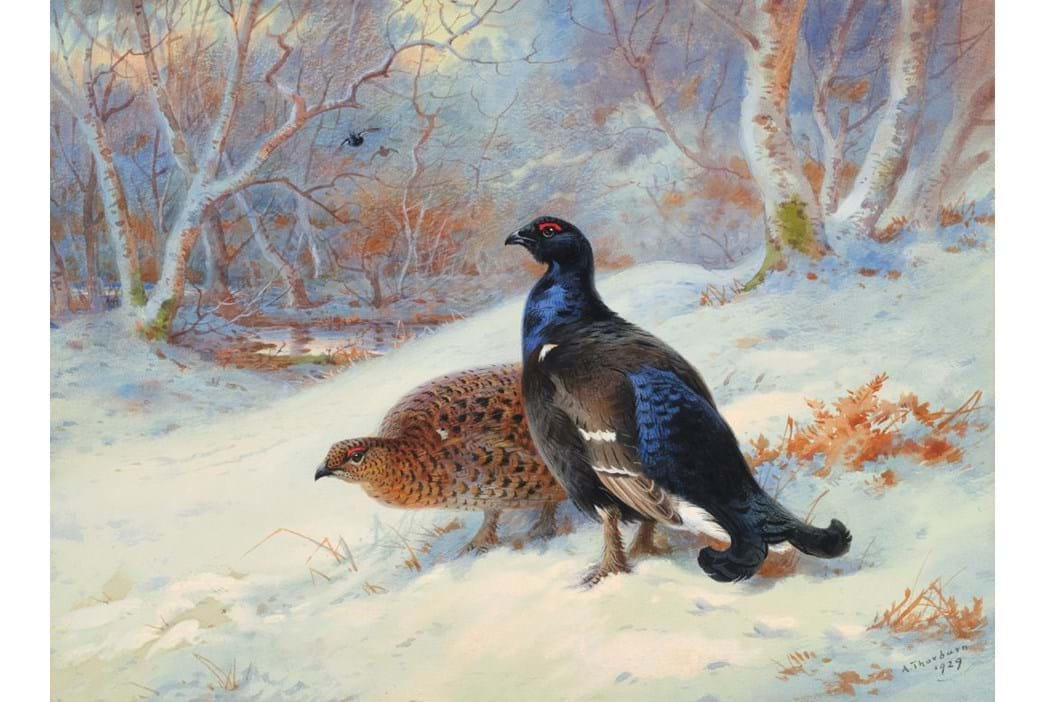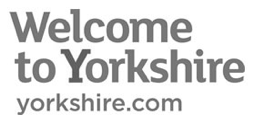Archibald Thorburn (1860-1935) is perhaps the most highly regarded and most widely recognised British wildlife artist, whose meticulous paintings are still much coveted by collectors today. By depicting his subjects, most frequently birds, in their proper habitat and with exceptional scientific accuracy and naturalism, his intricate and vibrant watercolours were elevated from the decorative to the empirical, long used for species identification.
Born in 1860 in Lasswade, near Edinburgh, Thorburn grew up surrounded by the natural world. An early proclivity towards sketching his environment, and particularly painting wildflowers, was fostered by his father, Robert, a leading portrait miniaturist and favourite of Queen Victoria; an exacting man, he was quick to destroy his son’s weaker sketches, helping him to refine his skills at a young age. After initial training in Edinburgh, Thorburn moved to St John’s Wood School of Art in London, and at just 20 years old exhibited his first work at the Royal Academy.
However, following the death of his father in 1885, he could no longer afford formal education, so sought out the guidance of wildlife painter Joseph Wolf. Under his mentorship, and with the friendship of fellow artist George Lodge, Thorburn’s talent flourished. By 1887, having achieved recognition for his work, he had tired of exhibiting in large-scale shows, frequently displease with how high up his works were hung. Instead, he concentrated on his numerous private commissions, which were crowned by the monumental set of 268 watercolours commissioned by Lord Lifford for the publication Coloured Figures of the Birds of the British Isles. Book illustrations, being on a small scale and requiring great precision, suited Thorburn’s talents. Numerous book commissions followed and allowed him to move to Hascombe in Surrey in 1896, with his wife and son. He relished the return to the picturesque countryside of the south of England, but kept a link with his native Scotland with frequent visits to the majestic Highlands.
Throughout his career, Thorburn favoured the delicate and fluid quality of watercolours, deeming oils too heavy and lifeless to illustrate the essence of wild birds. He enhanced his paint with tempera and opaque Chinese white, lending a vividness and luminosity. Careful composition complemented this meticulous technique, and his portrayal of birds in motion was a fresh contrast to static taxidermy-like styles prevalent at the time. A wonderful example of his work is Sea Birds, which sold at Tennants for a hammer price of £25,000; this impressive work included life-size birds in flight, preening, calling and feeding, all depicted with great technical mastery and an extraordinary vivacity and naturalism.
Thorburn’s approach to ornithological illustrations had a profound influence on successive generations of wildlife artists, setting the bar to which all others aimed. His love for his subject shines through in his work, and he became a passionate advocate for wildlife conservation, taking up the role of Vice President of the RSPB in 1927.
Coming up in the British, European and Sporting Art Sale on 12th July is Thorburn’s Blackgame in Snow (estimate: £8,000-12,000 plus buyer’s premium). With a bright and serene atmosphere, the work portrays a pair of gamebirds against frosty ground and a shaded woodland. In the sale, too are works by John Cyril Harrison (1898-1985), who was greatly influence by Thorburn’s approach, drawing on his scientific precision and attention to the natural environment of his subject matter. Highlights include his Woodcock in Fern Vegetation and a Snow-Bound Landscape (estimate: £700-1,000).













